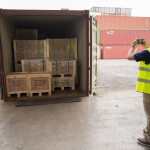20
Dec 2013
Top 10 problems in International Trade
The most common issues you can face doing international trade:
1. Distance:
Due to long distance between different countries, it is difficult to establish quick and close trade contacts between traders. Buyers and sellers rarely meet one another and personal contact is rarely possible.
There is a great time lag between placement of order and receipt of goods from foreign countries. Distance creates higher costs of transportation and greater risks.
2. Different languages:
Different languages are spoken and written in different countries. Price lists and catalogs are prepared in foreign languages. Advertisements and correspondence also are to be done in foreign languages.
A trader wishing to buy or sell goods abroad must know the foreign language or employ somebody who knows that language.
3. Difficulty in transportation and communication:
Dispatch and receipt of goods takes a longer time and involves considerable expenses. During the war and natural calamities, transportation of goods becomes even more difficult. Similarly, the costs of sending or receiving information are very high.
4. Risk in transit:
Foreign trade involves much greater risk than home trade. Goods have to be transported over long distances and they are exposed to perils of the sea. Many of these risks can be covered through marine insurance but increases the cost of goods.
5. Lack of information about foreign businessmen:
In the absence of direct and close relationship between buyers and sellers, special steps are necessary to verify the creditworthiness of foreign buyers. It is difficult to obtain reliable information concerning the financial position and business standing of the foreign traders. Therefore, credit risk is high.
6. Import and export restrictions:
Every country charges customs duties on imports to protect its home industries. Similarly, tariff rates are put on exports of raw materials. Importers and exporters have to face tariff restrictions.
They are required to fulfill several customs formalities and rules. Foreign trade policy, procedures, rules and regulations differ from country to country and keep on changing from time to time.

7. Documentation:
Both exporters and importers have to prepare several documents which involve expenditure of time and money.
8. Study of foreign markets:
Every foreign market has its own characteristics. It has requirements, customs, weights and measures, marketing methods, etc., of its own. An extensive study of foreign markets is essential for success in foreign trade. It is very difficult to collect accurate and up to date information about foreign markets.
9. Problems in payments:
Every country has its own currency and the rate at which one currency can be exchanged for another (called exchange rate) keeps on fluctuating change in exchange rate create additional risk.
Remittance of money for payments in foreign trade involves much time and expense. Due to wide time gap between dispatch of goods and receipt of payment, there is greater risk of bad debts.
10. Frequent market changes:
It is difficult to anticipate changes in demand and supply conditions abroad. Prices in international markets may change frequently. Such changes are due to entry of new competitors, changes in buyers’ preferences, changes in import duties and freight rates, fluctuations in exchange rates, etc.
Click here to see the solutions!

Source from PA































